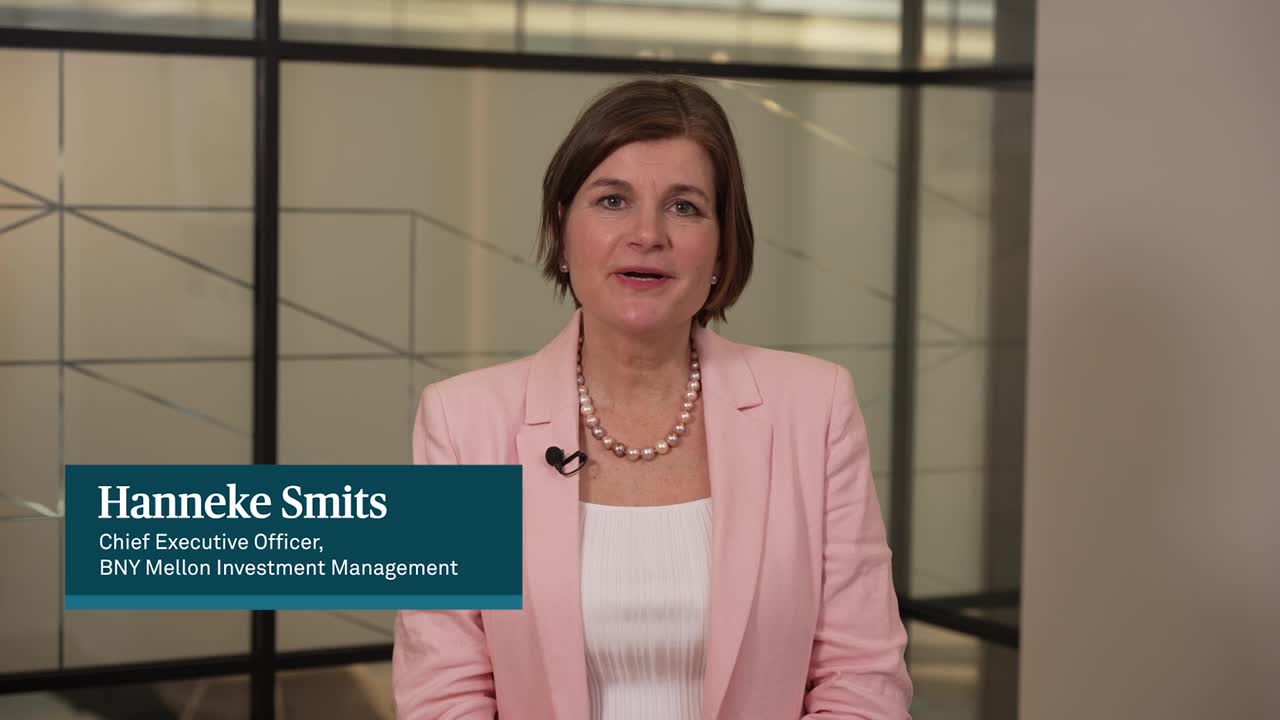Glossary – key terms
As Responsible Investment (RI) evolves, so do the definitions. There is currently a lack of industry standardisation on responsible investing terminology and many terms are used interchangeably. To clearly define how we think about RI at BNY Mellon Investment Management, we have provided the following definitions:
Best-in-class/positive screening: a rules-based approach to preferentially tilt a portfolio towards investment in sectors, companies or projects selected for positive, or best-in-class ESG characteristics relative to industry peers.
Enterprise ESG:Enterprise ESG describes “Who we are” – it is an approach that drives the culture at BNY Mellon, informs our responsible business practices and inspires our global citizenship. By implementing responsible, sustainable practices in the way we operate the company and conduct ourselves, we contribute to sustainable economic growth that helps protect healthy markets, enhances our own business resiliency and longevity, and aims to deliver positive impact for key stakeholders.
Note: This was formerly referred to as CSR (Corporate Social Responsibility).
ESG integration: The systematic and explicit incorporation of Environmental, Social and Governance factors into financial analysis and investment decisions to seek to better manage risks and improve returns. ESG Integration is one part of the investment process, investment decisions may not be based solely on these considerations. BNY Mellon IM firms could conclude that other considerations outweigh ESG factors when making investment decisions. Firms are not required to apply “red lines”, hurdle rates or benchmarks in order to fall under this category.
Exclusionary/negative screening: A rules-based approach to remove investments from the investable universe based on a particular set of values. It could involve the exclusion of certain sectors, companies, countries or other issuers based on activities considered not investable, e.g., weapons, tobacco, animal testing, violation of human rights or controversies. Exclusion criteria (based on norms and values) can refer, for example, to product categories (e.g., weapons, tobacco), company practices (e.g. animal testing, violation of human rights, corruption) or controversies.
Impact investing12: The practice of investing with the dual objective of generating a positive, measurable and intended social and/or environmental impact alongside the potential for generating a financial return.
Philanthropy: Philanthropy involves charitable giving to a worthy cause on a large scale. Philanthropy can include donating money to a worthy cause or volunteering time, effort, or other forms of altruism. Philanthropic investing is the practice of investing based not on profit but on an altruistic desire to help others or society as a whole.
Biodiversity: The variety of plant and animal life in the world or in a particular habitat, a high level of which is usually considered to be important and desirable. Biodiversity is a measure of variation at the genetic, species, and ecosystem level.
Carbon Credit: A generic term for a tradeable permit that allows the bearer to emit a specified amount of CO2 or other greenhouse gas (GHG), issued as part of an emissions trading scheme.
Carbon Dioxide Equivalent (CO2E): A unit to express the impact of a greenhouse gas (GHG), signified as the amount of CO2 with an equivalent impact on global warming. The amount of CO2 is commonly expressed as tonnes, also known as metric tons, equivalent to 1,000kg each. For example, according to the Office of National Statistics, the UK’s net territorial GHG emissions in 2021 were estimated to be 424.5 million tonnes CO2e, or 424.5m tCO2e.
Carbon Emissions: This term may be used to refer to greenhouse gas (GHG) emissions, CO2 emissions, or to carbon dioxide equivalent (CO2e) emissions.
Carbon Footprint: The carbon emissions associated with the activities of a person, company or other entity. It is also a measure of an entity’s carbon intensity, expressing the concentration of carbon emissions for a given unit which is usually per dollar of enterprise value (or per dollar of net debt for sovereigns).
Carbon Intensity: Carbon intensity measures how much carbon dioxide is generated by an entity, relative to a given unit (such as per dollar of revenue). Measures of carbon intensity include carbon footprint and weighted average carbon intensity (WACI).
Carbon Neutral: For a project or entity to be carbon neutral, any CO2 released into the atmosphere is balanced by an equivalent amount being removed. This may be achieved through financing or otherwise supporting efforts to remove CO2 from the atmosphere, such as the development of renewable energy projects or planting trees, or through the use of carbon credits or carbon trading schemes. An entity may therefore be ‘carbon neutral’ without reducing its emissions.
Circular Economy: The circular economy refers to an approach that seeks to eliminate waste, circulate products and materials, and to regenerate nature. The use of renewable energy and materials, and the reduction of consumption of finite resources, plays a key role. The term is typically used in contrast to a ‘linear economy’, which refers to the process by which resources are extracted, products are manufactured, and waste is discarded.
Climate Change: The long-term shifts in temperatures and weather patterns, primarily since the 1800s, driven by human activities, such as burning fossil fuels like coal, oil and gas. Warming of the planet caused by greenhouse gases is one of the most serious challenges facing humanity and efforts to halt global warming are at the heart of many Responsible Investment initiatives.
Climate Risks: Risks that can affect the financial performance of an investment may be broadly categorized in two ways: physical risks and transition risks. Physical risks may have financial implications for organizations, such as direct damage to assets and indirect impacts from supply chain disruption. Separately, transitioning to a lower-carbon economy may entail extensive policy, legal, technology, and market changes to address mitigation and adaptation requirements related to climate change
Impact/Use-of-Proceeds Bonds: A bond where the issuer specifies that the capital (proceeds) it receives from investors will be used to finance activities which have a positive environmental and/or social impact. These are commonly known as ‘use of proceeds’ bonds. Common types include green bonds, social bonds and sustainability bonds.
Greenhouse Gas(GHG) Emissions: The UN Framework Convention on Climate Change, under the Kyoto Protocol, has identified seven gases as of particular concern with regard to climate change: carbon dioxide, methane, nitrous oxide, hydrofluorocarbons, perfluorocarbons, sulphur hexafluoride and nitrogen trifluoride. Emissions of these gases are typically converted into carbon dioxide equivalent (CO2e) units for reporting purposes.
Natural Capital: This refers to stocks in nature that have value to society, such as forests, fisheries, rivers, biodiversity, land and minerals.
Natural capital includes both the living and non-living aspects of ecosystems. This includes areas involving interaction with such resources and which can have a market value (minerals, timber, freshwater) or non-market value (such as outdoor recreation and landscape amenity). See biodiversity, a sub-set of this.
Net Zero: This refers to the target of ensuring total greenhouse gas (GHG) emissions produced and emitted into the atmosphere are equal to or less than the emissions removed from the atmosphere on a global scale. This can be achieved by a combination of emissions reduction and emissions removal.
Paris Agreement: The Paris Agreement is an international treaty on climate change, adopted by 196 parties at the December 2015 UN Climate Change Conference in Paris. Its goal is to limit global warming to well below 2ºC, preferably to 1.5ºC, compared to pre-industrial levels. To achieve this long-term temperature goal, countries aim to reach global peaking of greenhouse gas (GHG) emissions as soon as possible.












